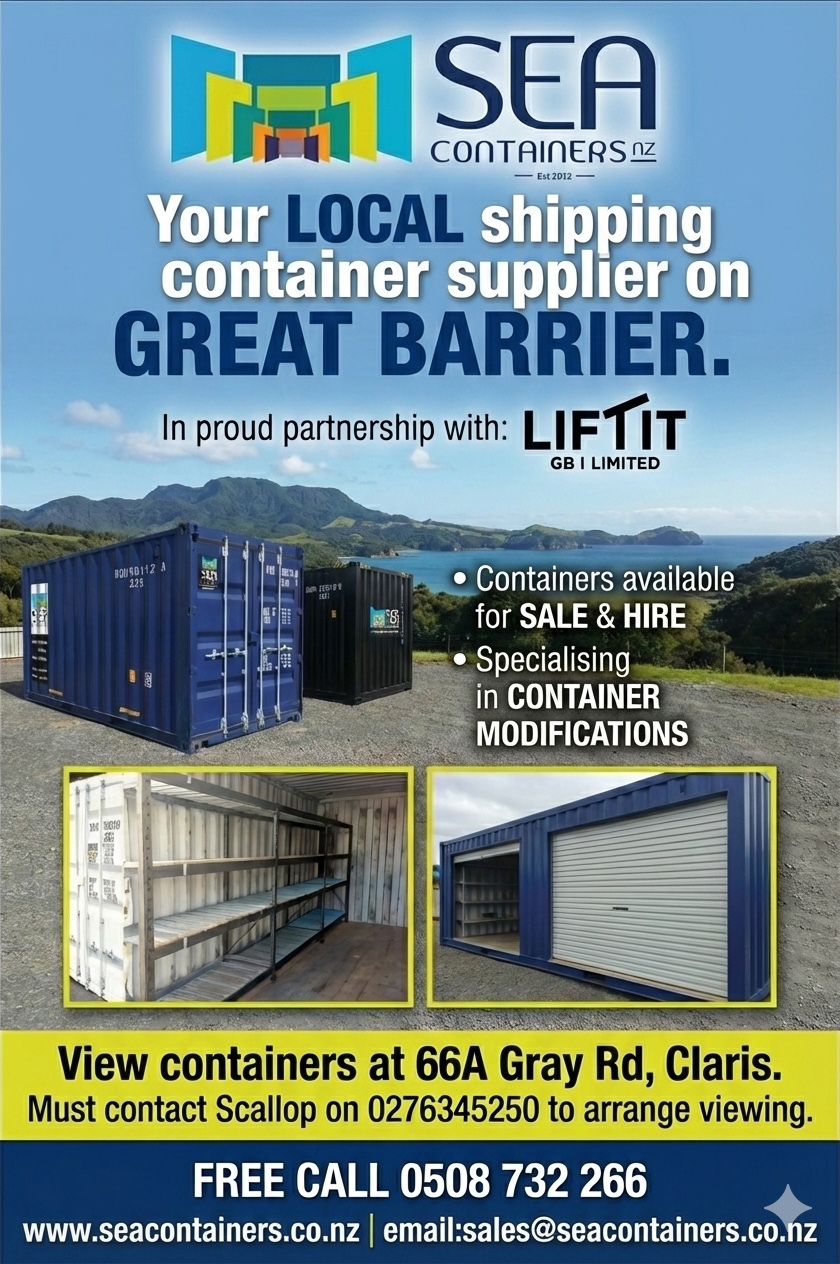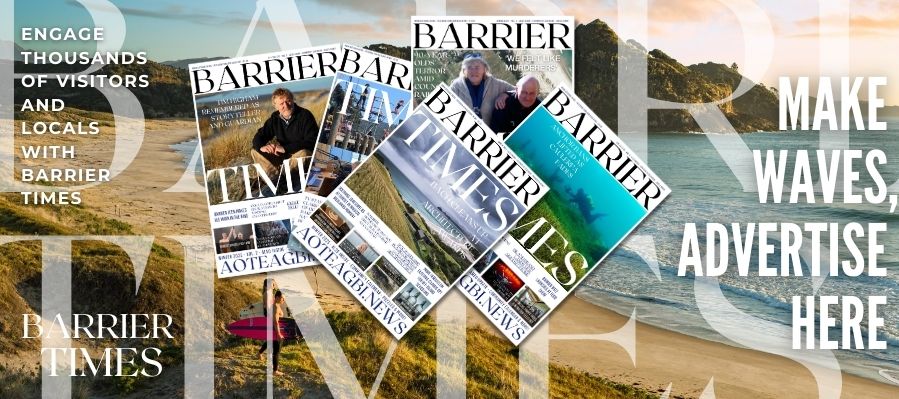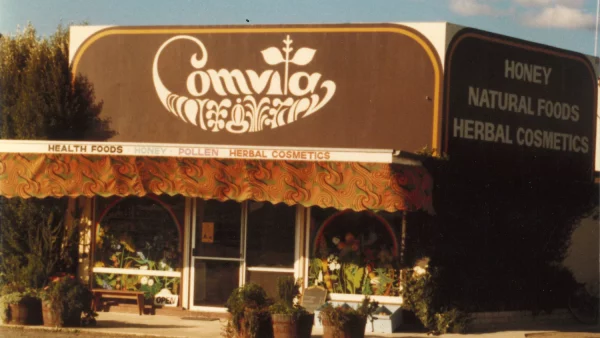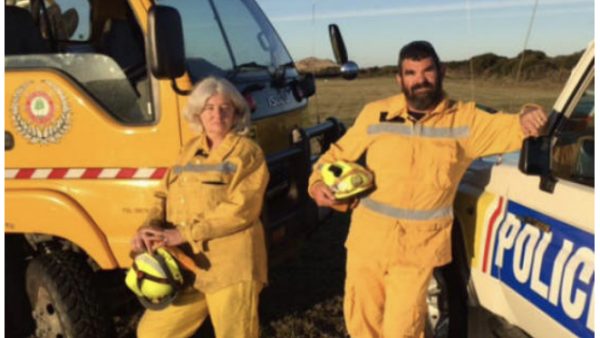by Jim Eagles, September 2004
To visit the only commercial winery on Great Barrier you need to take your hiking boots, a beanie and a warm jacket. Getting there means leaving your car by the beach at Okupu, trudging across a couple of wild and beautiful bays, jumping over some small streams, squelching along a muddy track and walking up to the last house in the last bay. Then, if you shout loudly enough and the
winemaker is at home, an amiable figure will appear upstairs, denounce you as mad for coming out on such a windy day, saunter down to put on his gumboots and open the tiny home-built winery for business. It’s all part of what makes Great Barrier Island such a special place to visit.
A trip there is about half an hour by air and half a century back in time. Flying over the Hauraki Gulf you leave behind stainless steel cafes and traffic jams, reticulated electricity and city noise, supermarkets and crime, good roads and crowds.

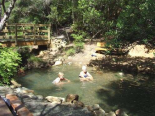
Great Barrier is New Zealand as we fondly remember it: a place where you don’t need to lock your doors, motorists wave when they pass, everyone knows everyone else, you can catch fish every time you go out, you can be the only person on a vast beach and people still do everything for themselves.
Of course, the Barrier has changed over the years. Most visitors arrive by air these days, there are luxury lodges to stay in and good places to eat at, rental car companies and tour operators greet the flights, the roads may be narrow but a lot of them are sealed and the walking tracks are fantastic … and there’s even that winery.
But all those city-type services still come with a special island flavour.
Getting there by plane may not be as exciting as the good old days, when visitors would stagger off the ferry at Tryphena, soaked to the skin and green about the gills, but it’s still an adventure.
For our visit we took off from the North Shore Aerodrome in a tiny, single-engined aircraft, enjoyed a pleasant flight over the lifestyle blocks of Dairy Flat, the Mediterranean colonies on Whangaparaoa Peninsula, and the resuscitated forest on Tiritiri Matangi, only to be sent scurrying back to base by a report that storms were looming further out.
When the weather stayed too rough for our wee plane, we drove over to Auckland International Airport and made the journey in an aircraft big enough to cope with the
expected buffeting. You don’t get that kind of excitement driving to the Coromandel or the Bay of Islands.
Flying over the Barrier is a reminder that it is rugged country, mostly covered in forest – in fact 60 per cent owned by the Department of Conservation – with many beautiful bays, few signs of civilisation and about as far from the bustle of city life as you could hope to get in 30 minutes.
I first went there 40 years ago on a tramping trip and had a wonderful time exploring ancient dams from the kauri era, old gold and copper mines, the graves of shipwrecked mariners, gloriously wild beaches, stunning views, magnificent bush and superb bird life.

We travelled out with the public health nurse, who obviously spread the word, because as we walked around the island people we had never met greeted us individually, “Hi Jim, hi Keith, hi Ian.”
Over the years I have also enjoyed great diving – my first crayfish – wonderful sailing and excellent fishing there.
But this trip was different, a luxury winter break, with no need to walk everywhere, shower under a waterfall, cook on primuses and stay in wet tents or cramped boats.
If it was summer you’d probably head for the sea to enjoy the fabulous surfing and swimming, diving and fishing. But this time of year, with the storm still blowing, it’s wiser to take advantage of the car to visit places such as Port FitzRoy, with its majestic harbour, Whangaparapara, where New Zealand’s last whaling station was built fewer than 50 years ago, Harataonga beach, with its miles of rolling surf and white sand, Tryphena, home of the Currach Irish Pub, and Windy Canyon, a place of magnificent views and, yes, powerful winds.
After a hard day exploring, it’s great to return to the comfort of the Mount St Paul Lodge, built in the style of a 19th-century colonial manor, with its roaring fire, glorious views of Kaitoke beach, sumptuous meals – chowder with fresh snapper, scallops, crayfish and mussels – and afterwards a giant bed and absolute peace and quiet.
And, if you’re lucky, the hosts may have a few friends in for dinner and you can get a feel for what locals think of the Department of Conservation (unprintable), the plan for a huge marine reserve off the coast (also unprintable), the future of the island (problematic) and the growing trend for rich outsiders to buy or build holiday homes (unenthusiastic).
And what about a Great Barrier spa pool? That involves a 20-minute walk along an immaculate track through bush to the heart of the Kaitoke Swamp, where a meeting of hot springs and cold streams has created a natural hot pool and it’s sufficiently isolated that it doesn’t matter if you’ve forgotten your togs.
Finally, there’s just time to wrap up warmly and visit the island winery. John Mellars, who lists himself as its general manager/ marketing/ sales/ winemaker, is a refugee from Auckland. The crash of 1989 sent his computer company broke and forced him to choose between his big house in Remuera or the block of land on Great Barrier he bought in 1973. “I opted for the Barrier.” After moving to the island, he says, “I needed a project and winemaking seemed like an interesting idea.”
So, in 1990 he cleared a small north-facing block of land on a point at the end of his bay – “I say it’s less than a hectare” – and started planting grapes. While the vines grew, he built a small winery, read a lot of books about winemaking and in 1993 produced his first vintage of Great Barrier Island Cabernet. “It was half a barrel of wine, 156 bottles, and I sold the lot at $50 a bottle.” And what was it like. “Well, Michael Cooper liked it.” Cooper described the ’93 as “hearty, richly flavoured”. His operation has expanded – a little – but he’s still selling all he produces. “It dribbles out. I sell some through the local shops, a couple by mail order and a few to people who drop in here. The walk puts off those who aren’t really keen. I don’t push it because I don’t want it all to go.”
The vintage he’s selling now, the 2000, produced 1500 bottles priced at $25.
The 2001 and 2002 vintages weren’t good, so he spilled the juice on to the lawn – there’s a big patch of dead kikuyu to show where it went – “because I needed the barrel”. But he’s pleased with the 2003 and even more enthusiastic about the 2004, which is the biggest crop yet. “I know that because it overflowed the vat. I came down in the night to check something and there was a big red puddle on the floor.” So how about a couple of bottles of the 2000 to take back round the rocks? “Hmmm. There’s not much of it left. I’m going to have to stop selling soon.” But he takes a couple of bottles out of the small stockpile, washes them in a bucket of water, sticks on a label, uses “a fancy French machine” to put on the cap, and there you go. For a wine produced by a self-taught amateur it’s remarkably good – Cooper described the ’96 as “amazingly enjoyable” – and goes well with a succulent New York sirloin.
The isolation and beauty of the vineyard and the idiosyncratic charm of the winemaker give Great Barrier Island Cabernet a unique appeal, yet it is a sophisticated wine, likely to appeal to most palates, and the winery is only a hop from Auckland.
Rather like Great Barrier itself, really.



